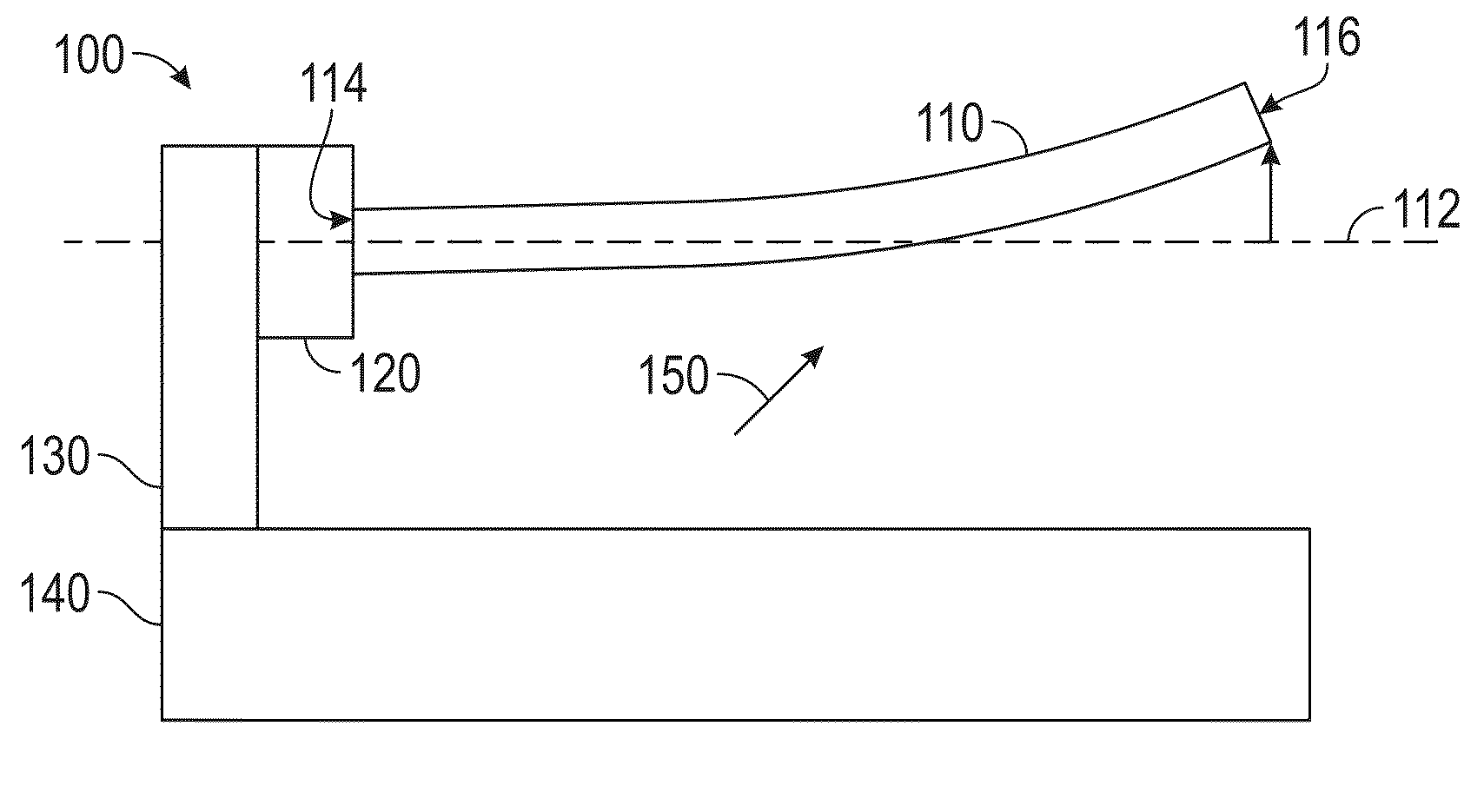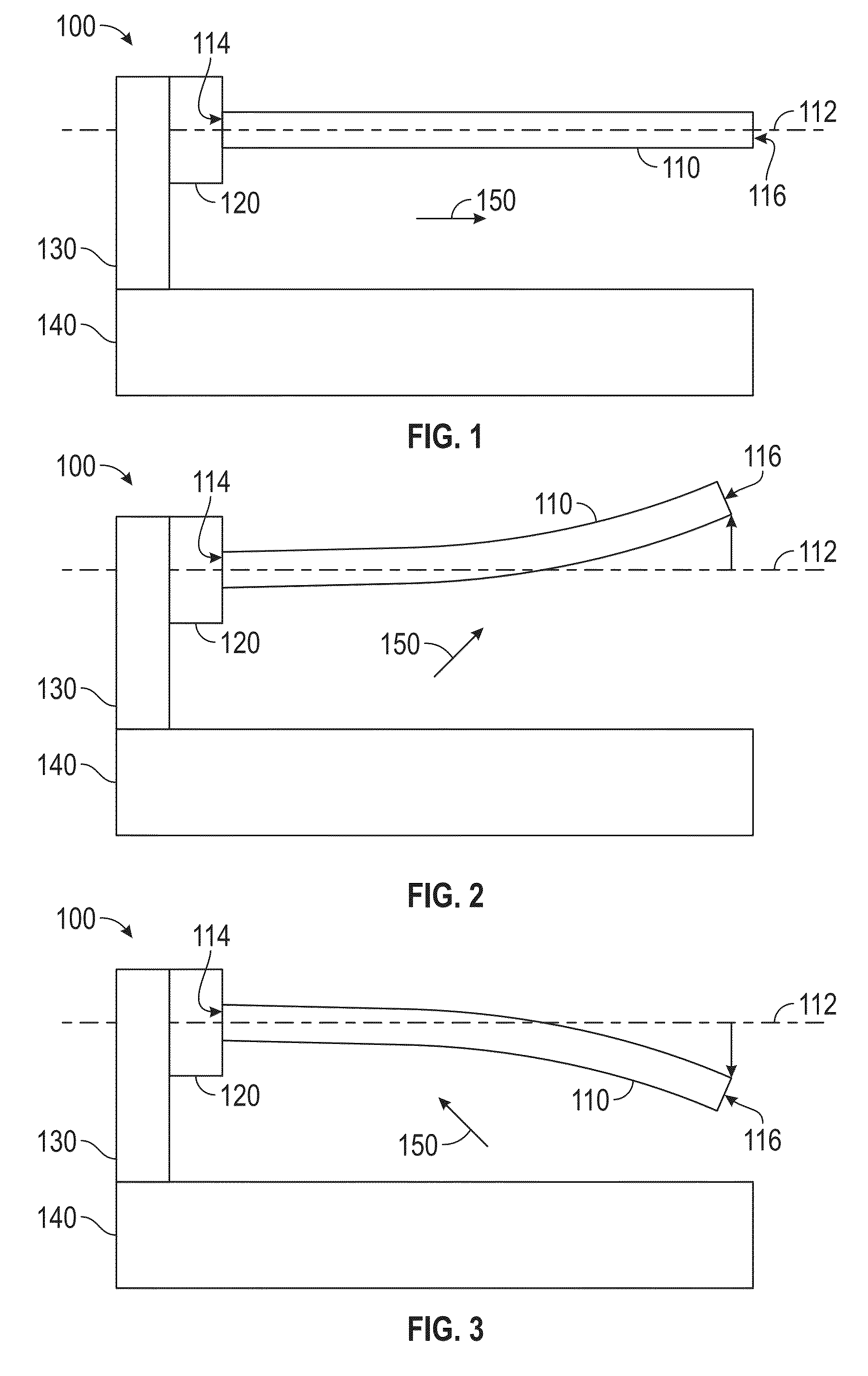Actuation via magnetic torque driven deformation
a technology of magnetic torque and deformation, applied in the direction of mechanical power devices, mechanical equipment, machines/engines, etc., can solve the problems of early fracture, high cost, and high cost of mfis of polycrystalline ni—mn—ga with fine grains and random textures
- Summary
- Abstract
- Description
- Claims
- Application Information
AI Technical Summary
Benefits of technology
Problems solved by technology
Method used
Image
Examples
example experimental embodiment
[0080]Ni—Mn—Ga wires with sub-millimeter diameter, either as individual wires or as part of a 2D / 3D wire assemblies, are promising candidates for actuators, sensors, magnetic cooling systems and energy harvesting devices. Here, we report on Ni—Mn—Ga microwires with 200-400 μm diameter fabricated by the Taylor method, as described herein, followed by annealing at 1050° C. for 1 h to achieve grain growth. The mechanical behavior of these oligocrystalline wires with bamboo grains was studied by tensile tests at room temperature. Wires with martensitic structure exhibit a very low Young's modulus of 5-8 GPa and superelastic behavior with twinning stresses of 22-30 MPa and recoverable strain of 3.5%, accumulating a plastic strain of ˜0.6% over 8 consecutive 0-50 MPa mechanical loading cycles. A 1 T rotating field caused the wire to bend to a curvature corresponding to a surface strain of 1.5%. During a full-field revolution, the wire deflected back and forth twice when the field directio...
PUM
 Login to View More
Login to View More Abstract
Description
Claims
Application Information
 Login to View More
Login to View More - R&D
- Intellectual Property
- Life Sciences
- Materials
- Tech Scout
- Unparalleled Data Quality
- Higher Quality Content
- 60% Fewer Hallucinations
Browse by: Latest US Patents, China's latest patents, Technical Efficacy Thesaurus, Application Domain, Technology Topic, Popular Technical Reports.
© 2025 PatSnap. All rights reserved.Legal|Privacy policy|Modern Slavery Act Transparency Statement|Sitemap|About US| Contact US: help@patsnap.com



